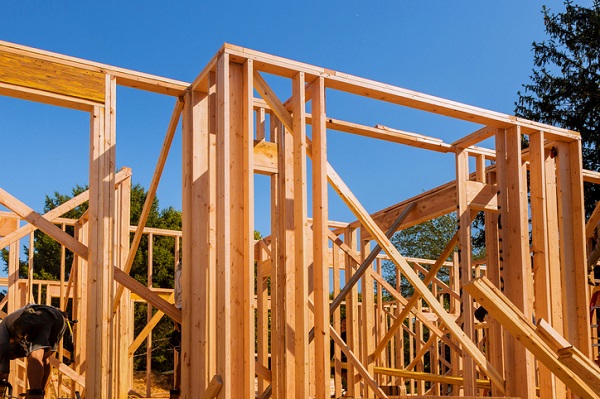What a builder recovery from COVID-19 might look like
A recovery from COVID-19 could be around the corner for builders. Throughout May, there have been positive signs that home builders have weathered the worst of the storm. Though it’s not all good news, there are reasons for hope, especially for builders. Let’s look at what’s going on and what a builder recovery from COVID-19 might look like going forward.
The confidence index and mortgage applications are increasing
Two key indicators of a builder recovery have been on the rise in recent weeks. According to the National Association of Home Builders (NAHB), the May confidence index among builders rose 7 points, up to 37, in May. The confidence index of 30 in April was the lowest index reading since June 2012.
There’s still a lot of ground to make up. In March, just as COVID-19 was beginning to disrupt life, the confidence index rested at 72. But the rise in confidence is a positive sign that the worst may be over for builders throughout most of the country. However, the Northeast did see a small decrease in confidence, which may have been driven primarily by New York.
In addition to the confidence increase, more prospective home buyers are applying for mortgages. Over the last 2 weeks, mortgage applications rose by 11% and 6%, respectively. And as of last week, purchase volume was only down 1.5% compared to last year. This is a huge reason for optimism, as purchase volume was down 35% at its lowest point in April.
Housing starts are down
One piece of bad news is how far down housing starts were in April. This isn’t a surprise. April was the first (and perhaps only) month where most states locked everything down. In April, housing starts dropped by around 30%. The primary cause of this drop was likely supply chain interruptions, rather than anything builders had direct control over.
But with many states beginning the process of reopening, home building is positioned to turn the tide. Fewer supply chain interruptions, along with increasing confidence and pent-up demand, could lead to a quick and noticeable recovery for builders who struggled through late March and April.
How might COVID-19 change how builders do business going forward?
Aside from the devastating financial effects COVID-19 wrought, there are 2 ways COVID-19 could possibly change how builders do business throughout and beyond the recovery.
More reliance on tech in the builder industry
Prior to COVID-19, there was little urgency for builders to rely on “hands-off technology.” Builders relied more on face-to-face interaction and often didn’t focus too heavily on implementing technologies like videoconferencing or cloud-based apps. COVID-19 may have upended the old style of doing business in that regard.
In the past, builders might have been more comfortable having prospective buyers on site to see the progress of building a home. COVID-19 often made that impossible due to social distancing requirements. And although home buyers are beginning to venture out for open houses again, not everyone will be eager to go out right away.
This may cause a shift in how builders view virtual business. Even before COVID-19, prospective home buyers were beginning to favor virtual ways to find information about homes. Now, the ability of builders to communicate clearly and show value virtually is becoming a prerequisite to success rather than a luxury. The idea that “Our industry can’t go virtual” has been effectively shattered by COVID-19, as many of the survivors did exactly that.
2-10 Home Buyers Warranty (2-10 HBW) Builder Members have already adapted to this shift. Using Builder Portal, builders can enroll their homes with structural warranty coverage from anywhere they have internet access. They can also access shareable marketing materials online, where their prospective buyers have been doing most of their searching over the last few months. 2-10 HBW makes it easier for builders to adjust to a post-COVID-19 world, and it makes it easier for their buyers to do so, too.
More focus on healthy homes going forward
Cleanliness has taken on an even larger presence in what buyers want in a home. Builders have seen this trend slowly develop over the years, with more buyers looking for healthy and sustainable living options (e.g., community gardens, solar paneling). Specifically, buyers may be looking at things like indoor air quality, touchless faucets and even HVAC disinfectors.
This could lead to a shift in the designs and materials builders use in their new construction. Buyers in the COVID-19 generation will likely carry the scars of mandatory cleanliness into their home searches. Builders who can accommodate their desire for healthy living spaces will have an early leg up as those buyers re-enter the market.
A stronger desire for dedicated work and recreation rooms
Isolation has forced people to live, work and do recreation in and around their homes. This could push potential buyers toward the expectation of home offices and home gyms in their homes. Though COVID-19 itself may be a once-in-a-lifetime incident, the convenience of having dedicated spaces for work and recreation will likely outlast the pandemic. It’s something that younger home buyers have begun to expect, and COVID-19 may have made that a more universal expectation.
Conclusion
As the housing market gears up for reopening, builders should focus on committing to tech-based solutions and cleanliness for their prospective buyers. Protection will be important to buyers as they come out of the haze of COVID-19 lockdowns.
2-10 HBW helps builders provide the protection buyers want through our industry-leading builders warranty. Builder Portal also gives builders tech-based solutions to questions and concerns their buyers may have. When buyers know you’re protecting them through the industry leader in new-home coverage, it can be a great differentiator.
Learn how you can protect your business and add valuable selling points to your new builds with a 2-10 HBW structural warranty.








